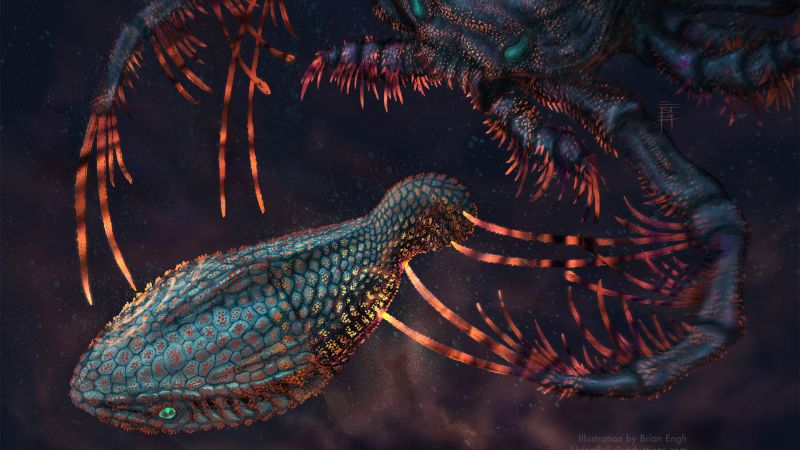A recent study published in the esteemed journal *Nature* has shed light on the evolutionary origins of teeth, suggesting that the sensitive interior found in human teeth may trace its roots back to a surprising ancestral feature in ancient fish. Specifically, this inner layer of teeth, known as dentine, is thought to derive from sensory tissue present in the fish that inhabited Earth’s oceans approximately 465 million years ago. This exploration not only provides insights into dental evolution but also highlights the connections between vertebrates and invertebrates.
Teeth, as most are aware, are encased in a hard material called enamel; however, it is the dentine that plays a crucial role in sensory perception. Dentine is responsible for conveying sensory information about pressure or temperature changes to the nerves. Historically, scientists have been puzzled regarding the origins of teeth. One of the theories suggested that teeth could have evolved from bumps found on the subjacent armored exoskeletons of ancient fish, but the true function of these features—termed odontodes—had long remained a mystery.
Fortunately, advances in 3D scanning technology employed by researchers have uncovered significant evidence indicating that these external bumps actually contained dentine. This anatomical structure quite likely enabled fish to detect various stimuli in their environment. Lead study author, Dr. Yara Haridy, a postdoctoral researcher from the University of Chicago’s Department of Organismal Biology and Anatomy, emphasized the importance of this sensory capability. She noted that the sensitive tissues likely allowed fish to detect pressure changes and temperature variations, crucial for their survival.
Through their research, the team drew parallels between odontodes and sensilla, sensory structures found in the shells of modern-day crustaceans, such as crabs and shrimp, as well as in fossilized arthropods. This evolutionary phenomenon exemplifies what is known as evolutionary convergence—where similar features develop independently in distinct taxonomic groups. Haridy explained that both jawless fish and extinct marine arthropods (Aglaspididae) shared a remarkably distant common ancestor that lacked hardened structures. This independent evolution led to similar sensory mechanisms among these diverse organisms.
An exciting discovery during the study revealed that while modern arthropods have retained their sensilla, odontodes appear to represent the direct precursors to the teeth found in animals. Furthermore, as the team analyzed various fossils, they realized that what was once believed to be an ancient fish, Anatolepis, was instead an arthropod. Haridy initially set out to uncover the beginnings of vertebrate life in the fossil record, seeking fossil specimens from museums to examine fossils from the Cambrian Period, which ranges from 540 to 485 million years ago. Utilizing high-resolution CT scans at the Argonne National Laboratory, the research team uncovered definitive evidence of dentine structures in fossils.
Their initial studies of Anatolepis indicated it bore similarities to early vertebrate fishes, but upon deeper exploration, the researchers found that what seemed to be dentine was actually akin to sensilla in arthropods. The fossils’ fragmentary nature had previously led to misclassifications; however, the modern imaging techniques enabled a detailed examination of internal anatomy, confirming its true identity.
In this process, the study revealed that these sensory structures are not confined to the mouth but could also serve as a form of armor—adding another layer to our understanding of early vertebrate evolution. Dr. Richard Dearden from the Naturalis Biodiversity Center in the Netherlands remarked on the research, stating that it employed advanced imaging techniques and generated a wealth of comparative data to resolve the debate surrounding Anatolepis.
The study not only confines the timeline for the emergence of hard tissue but also indicates that the earliest ancestors of jawed fish evolved from structures designed to aid sensory detection of their environment. Dr. Lauren Sallan of the Okinawa Institute of Science and Technology added that the distinction of Anatolepis as an arthropod might suggest that the precursors to teeth were initially adapted for sensing rather than solely for protection.
In conclusion, the new findings underscore the evolutionary complexity involved in the development of teeth and sensory structures. Dr. Neil Shubin, the senior author, highlighted the significance of these sensory functions in early vertebrates living in the predatory environment of the Ordovician period, illustrating an evolutionary journey from sensory mechanisms to the adaptive development of teeth as vertebrates evolved over millions of years. As Haridy and her team continue their search for the oldest vertebrate fossils, they remain fascinated by the ideas and discoveries that have emerged from their research, affirming that science continually propels us into new, uncharted territories.



